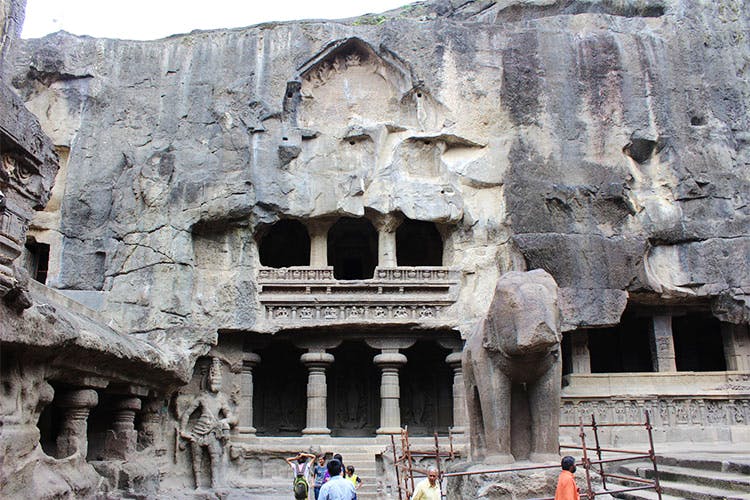We started the next day a little more lazily. With the Ellora site just a 45-minute drive from the city, we had the luxury of a late breakfast. The caves of Ellora are spread out and huge, and as such we visited only a few. Primary among them was cave no. 16, where the Kailasanatha Temple is located.
Designed to recall Mount Kailash, the Kailasanatha temple is the undoubted star of the Ellora sites. Carved out of one single rock {take a moment to let that sink in} it is unrivalled in its design and beauty. This feat of vertical excavation took our breath away and is definitely a “must visit”.
Built out of the rock face, it was carved from the top down. The sheer architectural and artistic talent needed to pull off such a feat astounded us. We saw massive pillars 20-feet high, huge elephants carved into the base of the temple, and intricately carved scenes from the Mahabharata on either side of the open square.
Unlike Ajanta, which is primarily a Buddhist site {hence all the Japanese tourists}, Ellora hosts caves by Jain, Hindu and Buddhist artists. Cave no. 16 was an amalgamation of all these styles, with artists from all three religions coming together and showcasing these skills on one site.
After doing some cursory research we found that the Japanese government had, over the years, donated tens of millions of dollars to the upkeep and renovation of the caves {as they are historically significant Buddhist sites}, and it made us think. When another country cares more about your history than you do, something is seriously wrong.
Ajanta and Ellora are not like your typical tourist sites; everyone knows about the Taj Mahal. Any Delhi resident has been to the Qutub Minar, Jama Masjid or even Red Fort. However, perhaps due to the lack of advertising, the caves have rarely had their due, and for us, that is a shame.

